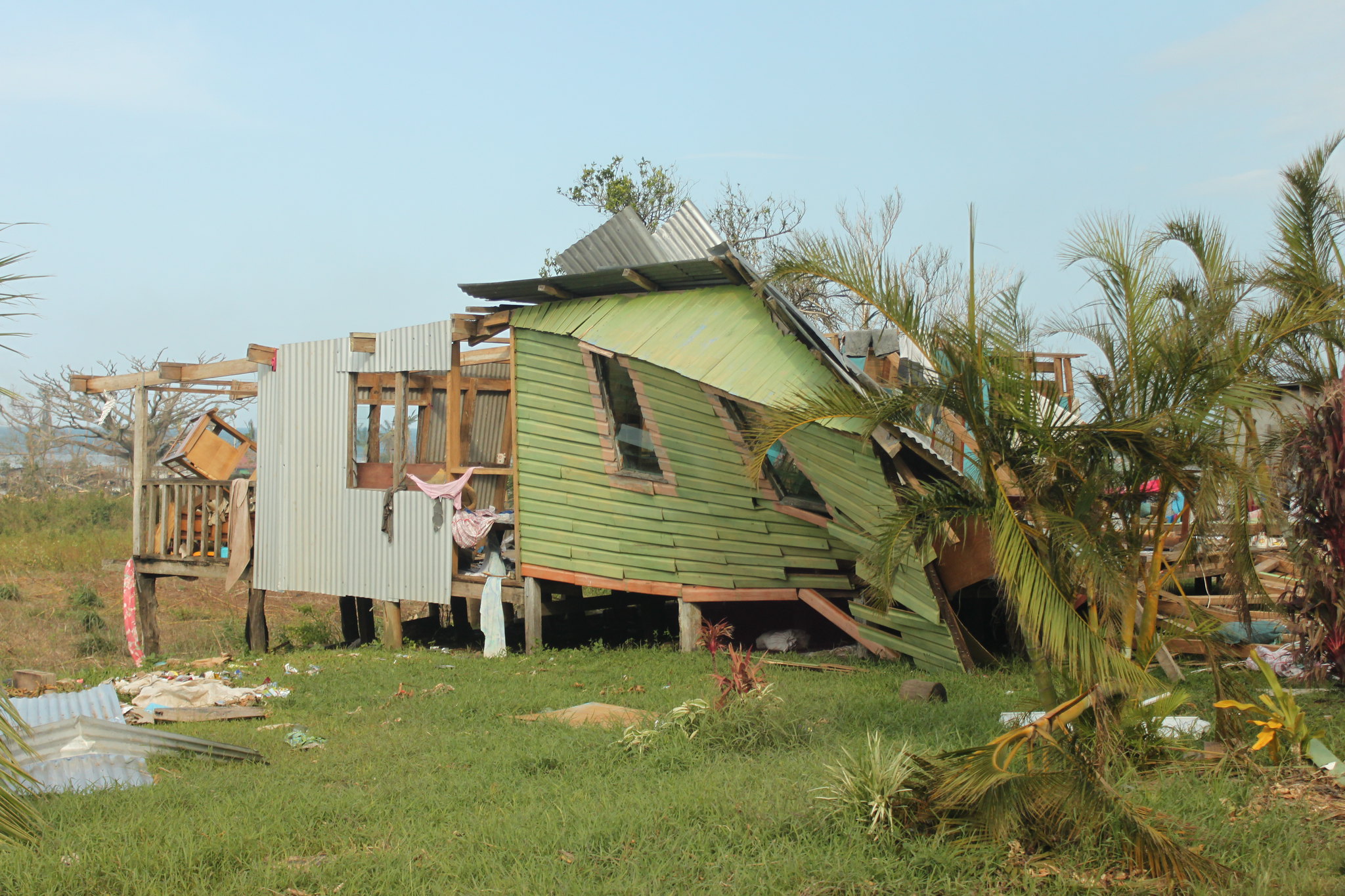
Damage caused by Tropical Cyclone Winston in Fiji in 2016
Insurance for all in the Pacific
By Preeti Sinha
5 October 2022
Our new report – ‘Index insurance best practices for insurance regulators and practitioners in the Pacific Island countries’ – is important for insurance stakeholders in the Pacific and beyond. It has resonance across the region as indications emerge of a vibrant insurance movement, driven by growing interest from insurance companies to explore mass markets, as well as support from governments and central banks.
In May, the Pacific Islands Forum’s Acting Secretary General, Dr Filimon Manoni, spoke about the need for ‘fit-for-purpose’ disaster risk financing instruments to help Pacific islanders better cope with natural disasters, with parametric (or index-based) insurance proposed as one potential solution. Traditionally, insurance access in the Pacific has been confined to medium- to high-income level urbanites, but now there is a move to embrace low-income rural dwellers as well.
Several challenges need to be addressed for the growth and development of insurance industries in the Pacific. Fiji’s 2020 Financial Services Demand Side Survey showed that only 15% of adults have access to some form of insurance. A survey in Tonga in 2014 produced similar findings: only 13% of Tongans have access to any form of insurance. Samoa, at 21%, fares better than its neighbours; but in Vanuatu coverage is only 5%.
These markets are currently dominated by indemnity-based insurance products. Indemnity products typically insure against physical losses such as house fires or car accidents, and payouts are made after damage assessments are carried out. In the Pacific, indemnity products are not priced for mass market consumers and mainly cater for high-income groups. Product distribution channels are also not accessible to consumers who live, for example, on remote islands far away from the insurance branches located in urban centres.
This means that in a region highly vulnerable to natural disasters, most people lack the financial protection insurance provides. When disaster inevitably strikes, the most vulnerable often do not have the means to financially cope and are pushed further into poverty.
Index insurance offers opportunities to solve some of these issues. With index insurance, payouts to the insured are triggered by a predetermined index that is used as a threshold, and the amount of the benefit is also determined by the value of the predetermined index. There is no need for individual loss assessment, as there is with indemnity insurance. These features improve transparency, help avoid disputes, and can reduce costs.
Our Pacific Insurance and Climate Adaptation Programme recently launched the Pacific’s first climate and disaster risk parametric micro-insurance. This product offers combined coverage against high wind and heavy rainfall related risks, with maximum payouts of up to $2,000 at a premium of 10% per annum. Payouts are triggered based on pre-determined events, such as a minimum level of rainfall or the strength of a cyclone, with no need for verification of losses.
The pilot phase in Fiji has seen 1,388 households sign up for the scheme, and the aim is to onboard a further 4,000 before the start of the 2022 cyclone season in November. Similar schemes will be launched in Tonga and Vanuatu later this year, followed by Solomon Islands and Samoa in 2023. Once approved for full market deployment, they will be underwritten by three private insurers, and will target farmers, fishers, market vendors, MSMEs (micro-, small and medium enterprises) and social welfare recipients.
It is a promising start, with the potential for further growth and development under the right conditions, with benefits for Pacific islanders and possible replication in other regions. There is further potential for the development of crop yield index, hybrid, and non-meteorological natural disaster risk insurance products, and others. As our report highlights, natural disasters tend to impact areas with little or no insurance coverage, and index insurance could fill that gap.
The report has crucial information on how to create favourable ecosystems for the development of insurance products, with recommendations on sustainability. It covers all stages of product development – from design, and identifying and accounting for risks, to piloting and testing, consumer protection and market deployment. The publication also presents best practices from ten different international markets, encompassing the various approaches to regulation, legal considerations, consumer education, distribution strategies and so forth.
The report has useful information for central bankers, insurance regulators, policymakers, tax officers, insurance companies, development practitioners and other market players. Perhaps most importantly, there is a central focus on consumer protection – including dispute resolution, policy disclosures, transparency and tax exemptions. The report recommends steps to minimise basis risk – the risk that insurance payouts do not cover the full cost of the claim event – for better quality products that improve customer confidence.
The report also provides an overview of the strengths, weaknesses and opportunities within the regulatory environments in Fiji, Samoa, Solomon Islands, Tonga and Vanuatu. These regulatory overviews are supported by guidance on legal frameworks, product and policy, market conduct, digitisation, bundled insurance, prudential supervision, and enforcement.
This report aims to inform the insurance sectors of the Pacific region, while providing the basis for the development of innovative products to serve the region’s unique needs. It seeks to maximise the potential for index insurance to provide financial protection for the traditionally uninsured in the Pacific.
Download the report ‘Index insurance best practices for insurance regulators and practitioners in the Pacific Island countries’.
About the author/s
Preeti Sinha
Preeti Sinha is Executive Secretary of the UN Capital Development Fund.
